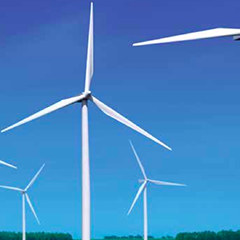PES presents an exclusive overview of the U.S. market, fresh from the desks of the American Wind Energy Association.
The U.S. wind energy industry achieved its best year ever in 2012, shattering numerous records. It installed 13,131 megawatts (MW) of capacity and surged past the 60-gigawatt (GW) milestone for total installed wind power capacity. Last year the industry invested over $25 billion in private capital to build new wind projects in the U.S., pushing the five-year average annual investment level to $18 billion between 2008 and 2012.
The result: for the first year ever, wind energy was the number one source of new electricity generating capacity, contributing 42 percent of all the megawatts the power sector installed. More than 180 wind projects were built.
Milestones
It was also in 2012 that the U.S. wind energy industry surpassed the 50-GW benchmark – and it happened just five months earlier. What does 10 GW in just a few months mean? To put it in perspective, it took the industry 25 years to reach 10 GW of total installed capacity; that came in 2006, when industry performance really took off. Just two years later in 2008, U.S. wind power doubled in capacity, hitting 20 GW, and then it took only one year apiece to reach the 30 GW and 40 GW milestones in 2009 and 2010, respectively.
The 60 GW installed today represents enough electricity to power the equivalent of 15.2 million American homes. That’s equal to all the households in Colorado, Iowa, Maryland, Michigan, Nevada and Ohio combined. The 60 GW of wind power now deployed can avoid nearly 100 million metric tons of carbon dioxide (CO2) – equivalent to more than four percent of all power-sector CO2 emissions.
Iowa and South Dakota now produce more than 20 percent of their electricity from wind energy. Meanwhile, even some of the nation’s largest state economies have significant wind power penetrations. The operating system in Texas, ERCOT, reached 10 percent wind energy on its system. Nine states now receive more than 10 percent of their electricity generation from wind energy.
The late-year surge was in part driven by the then-pending expiration of the federal Production Tax Credit (PTC) for wind energy, the industry’s primary policy driver in the U.S., which was set to expire at the end of the year. The PTC has always been extended in short-term increments (usually just for one or two years). While wind turbine component orders within the industry supply chain began to slow down in the second half of the year in anticipation of a possible expiration (even as developers completed projects at a record pace with completed turbines), Congress’s extension on Jan. 1, 2013, for projects that start this year has sent the industry back to work.



























